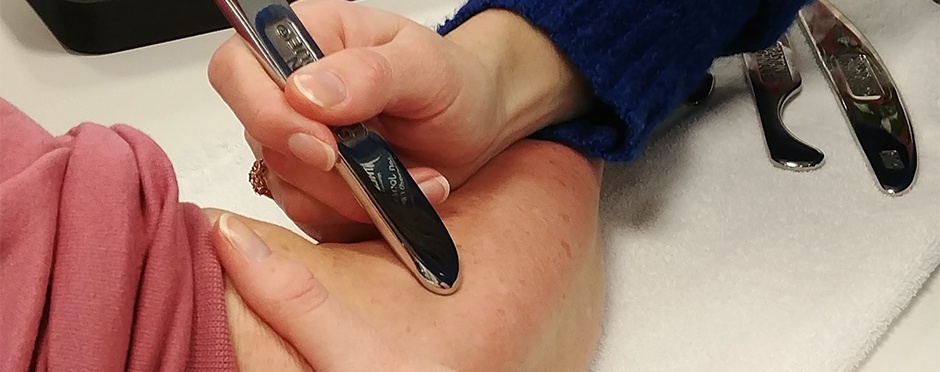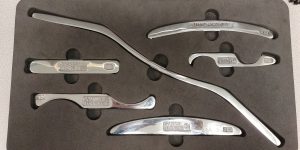
Graston®: What Is It and Who Should Try It?
3 CommentsMost people go to physical therapy and expect to learn exercises to help with their pain or injury, such as stretches to improve their range of motion. Sometimes these interventions alone do not completely resolve the problem, but there are specialty techniques that can help, including Graston®.
What is Graston®?
Graston Technique® uses instruments to achieve the effects and benefits of soft tissue mobilization. With Graston®, there are six specifically designed stainless steel instruments that a therapist uses to aid in finding an d treating soft tissue problems. It is an evidence-based method of IASTM (instrument-assisted soft tissue mobilization) that is used in combination with rehabilitative exercises to improve musculoskeletal function.
What are the Benefits of Graston®?
 Not only has Graston® been found to provide patients with quicker and improved outcomes, but it also provides patients with the opportunity to be active in their treatment, because they are able to feel abnormal tissue texture. Combined with exercise, Graston® helps break up scar tissue or muscle “knots,” which increases range of motion of joints, helps facilitate and quicken the healing process, increases the strength of muscle fibers, and reduces pain.
Not only has Graston® been found to provide patients with quicker and improved outcomes, but it also provides patients with the opportunity to be active in their treatment, because they are able to feel abnormal tissue texture. Combined with exercise, Graston® helps break up scar tissue or muscle “knots,” which increases range of motion of joints, helps facilitate and quicken the healing process, increases the strength of muscle fibers, and reduces pain.
At the first Graston® session, the therapist will evaluate where the patient is indicating pain, as well as the tissues above and below the affected area. The therapist will determine where the greatest restrictions are and how the patient tolerates Graston®, checking for any signs of bruising. The therapist will then prescribe exercises to be completed that will provide the maximum benefit of Graston® treatment. The length and number of sessions varies with each patient and each individual diagnosis, but Graston® has been shown to shorten the overall duration of therapy.
When Is Graston® a Treatment Option?
Patients with the following diagnoses make excellent candidates for this type of treatment:
- Tendinopathies (all the conditions that end in -osis or -itis, such as Achilles tendinitis, medial/lateral epicondylitis and greater trochanteric bursitis)
- Fascial syndromes (such as trigger finger, plantar fasciitis, ITB syndrome)
- Ligament pain syndromes (such as ankle sprains or other types of sprains)
- Edema/swelling reduction
- Post-surgical or traumatic scars/adhesions
- Entrapment syndromes (carpal/tarsal tunnel, ulnar entrapment, thoracic outlet).
Is Graston® Right for You?
It is important to note that not all patients are candidates for Graston® intervention. However, if you feel this treatment option may be beneficial to you, contact a nearby Athletico to learn more and schedule an appointment.
The Athletico blog is an educational resource written by Athletico employees. Athletico bloggers are licensed professionals who abide by the code of ethics outlined by their respective professional associations. The content published in blog posts represents the opinion of the individual author based on their expertise and experience. The content provided in this blog is for informational purposes only, does not constitute medical advice and should not be relied on for making personal health decisions.

3 Comments
Joe Corasaniti
Is Graston recommend for ruptured long head of bicep tendon
Athletico
Acutely, no, Graston is not recommended. However if you experience a lot of lingering/dysfunctional scar tissue or limited range of motion after the acute inflammation phase has passed, then Graston could absolutely help restore normal tissue mobility and function. Please reach out to one of our clinics and we can provide you with recommended treatment options for your recovery.
Lisa Nethers
Is the Graston Technique recommended after total knee replacement for a diabetic ?
I am asking for my 90 year old father who is in very good health other than neuropathy in his feet.
It’s been a little over 4 weeks since his knee replacement and he seems to be healing very well. Just dealing with after surgery pain.